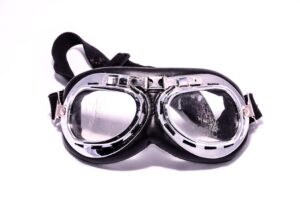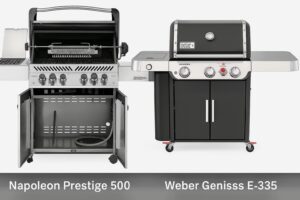
Motorcycle Safety Gear: More Than Just Helmets
In the thrilling world of motorcycle riding, safety should always be a top priority. While helmets often steal the spotlight when it comes to protective gear, there is so much more to consider. From sturdy jackets to reinforced pants and resilient boots, the world of motorcycle safety gear is vast and essential. In this article, we will explore the various types of safety gear available, their importance, and how they can enhance your riding experience. So buckle up (or zip up), because we’re about to take a ride through the world of motorcycle safety gear like never before!
Helmet Safety

Importance of wearing a helmet
Wearing a helmet is of utmost importance when it comes to motorcycle safety. Your head is the most vulnerable part of your body, and a helmet provides the necessary protection in case of an accident. It helps absorb the impact and minimize the risk of head injuries, brain damage, or even death. When you’re riding at high speeds, the wind alone can cause a significant amount of damage to your face and eyes. By wearing a helmet, you not only protect yourself from potential dangers but also set a responsible example for other riders.
Different types of helmets
There are various types of helmets available, each designed to cater to different riding styles and preferences. The most common types include full-face helmets, modular or flip-up helmets, open-face helmets, and half helmets. Full-face helmets offer the highest level of protection as they cover your entire face and chin. Modular helmets have a pivot mechanism that allows the chin bar to be lifted, providing the convenience of an open-face helmet with the added protection of a full-face helmet. Open-face helmets cover the top, sides, and back of your head, leaving your face exposed. Half helmets cover only the top rear portion of your head, leaving your face, ears, and lower part of your skull vulnerable.
Choosing the right helmet
When choosing a helmet, it’s crucial to consider factors such as safety ratings, fit, comfort, and visibility. Look for helmets that meet or exceed safety standards set by organizations like the Department of Transportation (DOT), Snell Memorial Foundation, or the European Union. Ensure that the helmet fits snugly and securely on your head without any pressure points or excessive movement. Opt for helmets with good ventilation to prevent discomfort due to excessive heat or sweating. Additionally, choose helmets with a high-visibility color or reflective elements to improve visibility on the road.
Helmet safety standards
Helmet safety standards are set to ensure that the helmets offer adequate protection in case of an accident. The most widely recognized safety standards include DOT, Snell, and ECE. The Department of Transportation (DOT) sets mandatory safety standards for helmets sold in the United States. The Snell Memorial Foundation is a non-profit organization that conducts extensive testing to ensure helmets offer optimal protection. The Economic Commission for Europe (ECE) is a European Union standard that certifies helmets for sale in Europe. These standards evaluate various factors such as impact resistance, retention system strength, peripheral vision, and chin bar effectiveness to ensure the helmets meet the necessary safety requirements. Always look for helmets that comply with these safety standards for maximum protection.
Protective Clothing
Jackets and riding suits
Wearing a protective jacket or riding suit is an essential aspect of motorcycle safety gear. These garments are designed to offer protection against abrasion, impact, and weather conditions. Look for jackets or suits that are made from high-quality materials such as leather or textile with reinforced stitching. They should also have built-in armor or padding in vulnerable areas like the shoulders, elbows, and back to absorb impact and minimize injuries. Additionally, consider jackets or suits with reflective elements to enhance visibility, especially during night rides.
Pants and riding jeans
Equally important as jackets are pants or riding jeans. These specialized pants provide protection for your legs and lower body in the event of an accident or a slide. Look for pants or jeans made from durable materials like leather, textile, or reinforced denim. Similar to jackets, ensure they have built-in armor or padding on the knees, hips, and thighs for added protection. Consider pants or jeans that offer a snug fit to eliminate any loose fabric that can get caught on motorcycle parts.
Gloves
Your hands are exposed and vulnerable while riding, making gloves an essential part of your safety gear. Gloves provide protection against abrasion, impact, and weather conditions, as well as improve grip and control on the handlebars. Look for gloves made from high-quality materials like leather or textile with reinforced padding on the palms, knuckles, and fingers. Ensure that they fit properly without restricting movement and offer good ventilation to prevent discomfort.
Boots
Wearing sturdy and protective boots is crucial for both comfort and safety while riding. Boots provide ankle support, impact protection, and abrasion resistance. Look for boots made from durable materials such as leather with reinforced soles and ankle support. The boots should fit snugly without being too tight and should have non-slip soles for better grip on the footpegs.
Hi-visibility gear
Being visible to other motorists is essential for your safety on the road. High-visibility (hi-vis) gear helps improve your visibility, especially during low-light conditions or in inclement weather. Look for jackets, pants, gloves, and boots that have hi-vis elements such as reflective strips or bright colors. These can significantly increase your visibility to other drivers, reducing the risk of accidents.
Protective Gear Accessories
Armored vests and back protectors
In addition to jackets or suits, armored vests and back protectors can provide an extra layer of protection for your torso. Armored vests are designed to fit over your regular clothes or under a riding jacket, providing impact protection for your chest, back, and spine. Back protectors, on the other hand, are designed to be worn under your jacket or suit and focus primarily on protecting your spine and back in case of a collision or fall.
Knee and elbow guards
For riders who want additional protection for their knees and elbows, knee and elbow guards are highly recommended. These guards are usually made from durable materials such as hard plastic or reinforced textiles and can be worn under your pants and jacket. They provide an extra layer of impact and abrasion protection, especially in areas that are prone to injury.
Neck braces
Neck braces are designed to reduce the risk of severe neck and spinal cord injuries in case of a collision or fall. These braces support your neck and limit excessive movement, reducing the strain on your spine. Look for braces that are adjustable for a comfortable fit and compatible with your helmet.
Chest protectors
Chest protectors are particularly important for off-road or motocross riders who are more prone to impacts and falls. These protectors cover your chest, shoulders, and upper back, providing additional impact and abrasion protection. Look for chest protectors that are lightweight, flexible, and compatible with your riding gear.
Impact shorts
For added protection to your hips, tailbone, and thighs, consider wearing impact shorts. These shorts are specifically designed with padding or armor to absorb impact in case of a fall or collision. Look for impact shorts made from high-quality materials that offer sufficient padding and comfort.
Eye Protection

Importance of eye protection
Your eyes are crucial for safe riding, and proper eye protection is essential to maintain clear vision and protect your eyes from debris, wind, and bugs. The wind alone can cause your eyes to tear up and impair your vision, making riding extremely dangerous. Eye protection also shields your eyes from harmful UV rays and reduces the risk of eye injuries in case of an accident.
Types of motorcycle goggles
Motorcycle goggles are an excellent choice for eye protection, especially when riding in dusty or windy conditions. They fit securely around your eyes, creating a barrier against debris and wind. Look for goggles that offer a wide field of vision, have anti-fog lenses, and provide UV protection. For those who wear prescription glasses, consider goggles that can be worn over them.
Benefits of using sunglasses
Sunglasses not only protect your eyes from harmful UV rays but also reduce glare, enhance visibility, and improve your overall comfort while riding. Look for sunglasses with shatterproof lenses and a wrap-around design to provide maximum coverage and protection. Polarized lenses are highly recommended for reducing glare from the sun and improving your vision on the road.
Anti-fog solutions for visors
Fogged-up visors can significantly impair your vision, especially in cold or humid conditions. To prevent this, consider using anti-fog solutions specifically designed for visors. These solutions create a thin film that prevents condensation and helps maintain clear visibility during your ride.
Full Body Gear
Full body suits
For riders who prioritize maximum protection, full body suits offer unparalleled coverage and safety. These suits are typically made from specialized materials like leather or textile and cover your entire body from the neck down. They often come with built-in armor or padding on vulnerable areas such as the shoulders, elbows, hips, and knees. Full body suits provide superior protection against abrasion, impact, and weather conditions, making them ideal for sport riding or track use.
Airbag systems
Airbag systems have revolutionized motorcycle safety by providing additional protection to the rider in case of an accident. These systems work by inflating airbags around critical areas such as the neck, shoulders, chest, and back to absorb and distribute the impact forces. Airbag systems can be integrated into jackets or suits, or worn separately as vests. They provide an extra layer of protection, reducing the risk of severe injuries or fractures.
Advantages of full body gear
Choosing full body gear offers several advantages beyond just protection. These suits are often designed to provide a comfortable and ergonomic fit while allowing freedom of movement. They also offer excellent insulation and weather resistance, keeping you comfortable in various riding conditions. Additionally, full body gear can enhance aerodynamics, reducing drag and improving your overall performance on the road or track.
Full face versus open face helmets
While full face helmets provide the highest level of protection, open face helmets have their own advantages. Full face helmets cover your entire face, providing protection for your chin, jaw, and eyes. They are recommended for riders who prioritize safety and want maximum coverage. On the other hand, open face helmets offer more visibility and a greater sense of freedom, making them popular among cruiser and scooter riders. When choosing between the two, consider your riding style, preferences, and the level of protection you desire.
Visibility and Reflectivity
Importance of being visible
Being visible to other road users is crucial for your safety as a motorcyclist. Many accidents occur due to other drivers not seeing motorcycles on the road. Improving your visibility through various means can significantly reduce the risk of collisions, especially in low-light conditions or during adverse weather.
Reflective vests and stickers
Reflective vests and stickers are an effective way to enhance visibility, especially during nighttime riding. They are made from materials that reflect light, making you more visible to other drivers from a distance. Reflective vests can be worn over your riding gear, while stickers can be applied to your helmet, bike, or other parts of your gear. Always opt for high-quality and durable reflective products that meet safety standards.
LED lights and reflectors
Installing additional LED lights or reflectors on your motorcycle can significantly improve your visibility, especially from the rear. LED lights are bright and long-lasting, ensuring that other drivers can easily spot you on the road. Reflectors, on the other hand, provide passive visibility by reflecting light back to its source. Consider installing LED lights on your tail, brake, and turn signals, as well as adding reflectors to your bike and gear.
Benefits of hi-visibility gear
Hi-visibility (hi-vis) gear can make a significant difference when it comes to your safety on the road. Hi-vis jackets, pants, gloves, and boots are made from bright colors like yellow, orange, or neon green that stand out from the surroundings. These colors contrast with the road and other vehicles, making you more visible, especially during daytime or in low-light conditions. Hi-vis gear is particularly beneficial in urban environments or areas with heavy traffic.
Communication Devices
Bluetooth intercom systems
Bluetooth intercom systems have revolutionized communication between riders, enabling them to stay connected and share information while on the road. These systems allow riders to communicate with each other via wireless technology, eliminating the need for hand signals or shouted instructions. Bluetooth intercom systems are typically integrated into helmets or can be attached as separate devices. They offer features like two-way communication, group chat, music playback, and GPS navigation.
Benefits of helmet-mounted communication
Having a communication device mounted on your helmet offers several advantages. It allows you to maintain focus on the road and keep your hands on the handlebars while still being able to communicate with fellow riders or receive important information. Helmet-mounted communication devices provide clear and uninterrupted sound quality, ensuring effective communication even at high speeds or in noisy environments. They also eliminate the need for separate devices or hand-held radios, offering convenience and ease of use.
Connecting with other riders
Bluetooth intercom systems enable riders to connect with each other, forming a network of communication while on the road. This allows for real-time communication, sharing of directions or information, and coordination during group rides. Connected riders can warn each other about potential hazards, plan routes, or simply enjoy conversations. Bluetooth intercom systems have made riding in groups safer, more enjoyable, and more convenient.
Enhancing safety through communication
Communication devices play a significant role in enhancing rider safety. They enable riders to warn each other about hazards, adjust their riding style, or provide assistance in case of emergencies. Furthermore, communication devices allow for quick coordination during group rides, minimizing the risk of accidents or route confusion. The ability to communicate effectively while on the road can improve overall situational awareness and response times, ensuring a safer riding experience for everyone involved.
Rain and Cold Weather Gear

Rain suits and waterproof jackets
Riding in the rain can be challenging, but with the right gear, you can stay dry and comfortable. Rain suits and waterproof jackets are designed to keep you protected from water, maintaining your body temperature and preventing hypothermia. Look for rain suits or jackets made from waterproof materials with sealed seams and adjustable closures to keep the rain out. Breathability is also crucial to prevent excessive sweating and discomfort.
Cold weather riding gloves
Keeping your hands warm during cold weather rides is essential for maintaining proper grip and control on the handlebars. Cold weather riding gloves are designed with insulation and windproof materials to provide warmth and protection against the elements. Look for gloves that are specifically designed for cold weather riding and offer excellent dexterity and grip.
Heated clothing
For riders who often face extremely cold temperatures, heated clothing can be a game-changer. Heated jackets, vests, pants, and gloves use heating elements or wires powered by a battery or the motorcycle’s electrical system to provide warmth. These garments can be adjusted to your desired temperature and offer effective heat distribution, allowing you to ride comfortably in freezing conditions.
Frostbite prevention
Frostbite is a serious concern when riding in extremely cold weather. To prevent frostbite, it’s crucial to keep your body adequately covered and protected. Layering your clothing is essential to trap body heat and maintain your core temperature. Ensure that all exposed areas, such as your face, neck, hands, and feet, are properly covered with appropriate gear. Pay attention to any signs of frostbite, such as numbness or discoloration, and seek immediate medical attention if necessary.
Maintenance and Replacement
Regular inspection of gear
Regularly inspecting your gear is vital to ensure that it remains in good condition and provides the necessary protection. Check for any signs of wear, damage, or loose seams on your helmet, jacket, pants, gloves, boots, or any other safety gear. Inspect the armor or padding for any signs of compression or deterioration, as this can affect its effectiveness in absorbing impact. Make sure all zippers, closures, and straps are in working order and properly secured.
Replacing worn-out gear
Safety gear has a limited lifespan due to wear and tear, exposure to the elements, and evolving safety standards. It’s important to replace your gear when it shows signs of significant wear, damage, or when the safety standards it complies with become outdated. Helmets, for example, should be replaced every five years or after a significant impact. Jackets, pants, and gloves should be replaced if they are torn, have loose seams, or if the armor or padding is compressed. Regularly check for recalls or safety updates from manufacturers to ensure that your gear meets the latest safety standards.
Ensuring proper fit
Proper fit is crucial for the effectiveness of your safety gear. Ill-fitting gear can compromise its ability to protect you during an accident. Take the time to measure yourself and consult the manufacturer’s sizing charts before purchasing any gear. In the case of helmets, try them on to ensure a snug fit without any pressure points or excessive movement. Remember, your gear should fit comfortably while allowing for freedom of movement.
Storage and care of safety gear
Proper storage and care of your safety gear can help prolong its lifespan and maintain its functionality. Clean your gear regularly following the manufacturer’s instructions to remove dirt, sweat, or any other particles that could affect its performance. Properly store your gear in a cool, dry place away from direct sunlight or extreme temperatures. Avoid hanging your gear, as this can distort its shape or compromise the integrity of the materials. Instead, use special hangers, hooks, or storage bags designed for safety gear.
Rider Education and Training
Importance of motorcycle safety courses
No matter how experienced you are as a rider, ongoing education and training are essential for improving your safety on the road. Motorcycle safety courses provide valuable knowledge, skills, and confidence that can help you navigate various riding situations. These courses cover topics such as proper gear usage, defensive riding techniques, emergency maneuvers, and traffic laws. By enrolling in such courses, you become a more informed and responsible rider, reducing the risk of accidents and injuries.
Training on proper gear usage
Motorcycle safety courses not only focus on riding techniques but also emphasize the importance of proper gear usage. These courses educate riders on the different types of safety gear available, their functions, and their importance in protecting you during accidents. They also provide guidance on choosing the right gear for your riding style and how to properly wear and maintain it. Learning about gear usage promotes a safety-conscious mindset and helps riders make informed decisions when selecting and using their gear.
Demonstrating emergency maneuvers
Motorcycle safety courses often include hands-on training sessions that demonstrate and teach emergency maneuvers. These maneuvers are crucial for avoiding potential accidents or minimizing the impact of collisions. By practicing emergency braking, swerving, and evasive maneuvers, riders can develop the skills and muscle memory required to react effectively in critical situations. Safety gear plays a vital role in these maneuvers by offering additional protection during abrupt or high-impact movements.
Safe riding techniques
Safe riding techniques are at the core of motorcycle safety education. Courses provide instruction on defensive riding, anticipating and responding to potential hazards, maintaining proper positioning on the road, and avoiding common riding mistakes. Safe riding techniques, coupled with proper gear usage, significantly reduce the likelihood of accidents and injuries. By investing in rider education and training, you enhance your overall safety and the safety of others sharing the road with you.
Motorcycle Safety Gear: More Than Just Helmets
In conclusion, motorcycle safety gear is much more than just helmets. It covers a wide range of protective clothing, gear accessories, eye protection, full body gear, visibility and reflectivity tools, communication devices, rain and cold weather gear, and proper maintenance and replacement practices. Each aspect of safety gear plays a vital role in reducing the risk of injuries and enhancing the overall safety of motorcycle riders. By investing in quality gear, choosing the right products for your riding style, and staying updated on the latest safety standards, you can ride with peace of mind and enjoy the open road safely. Remember, your safety should always be a top priority, and the right gear can make all the difference. Stay informed, stay protected, and enjoy your ride!









